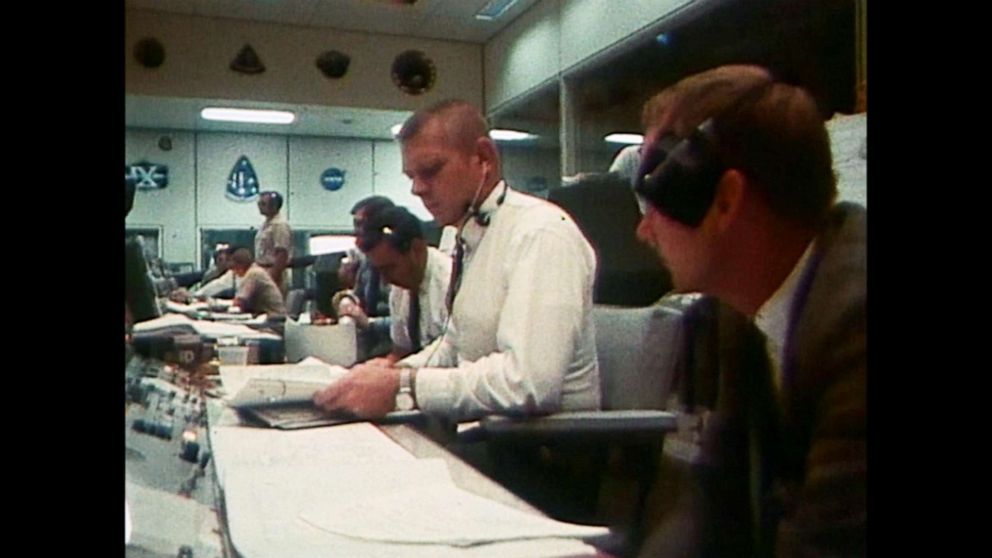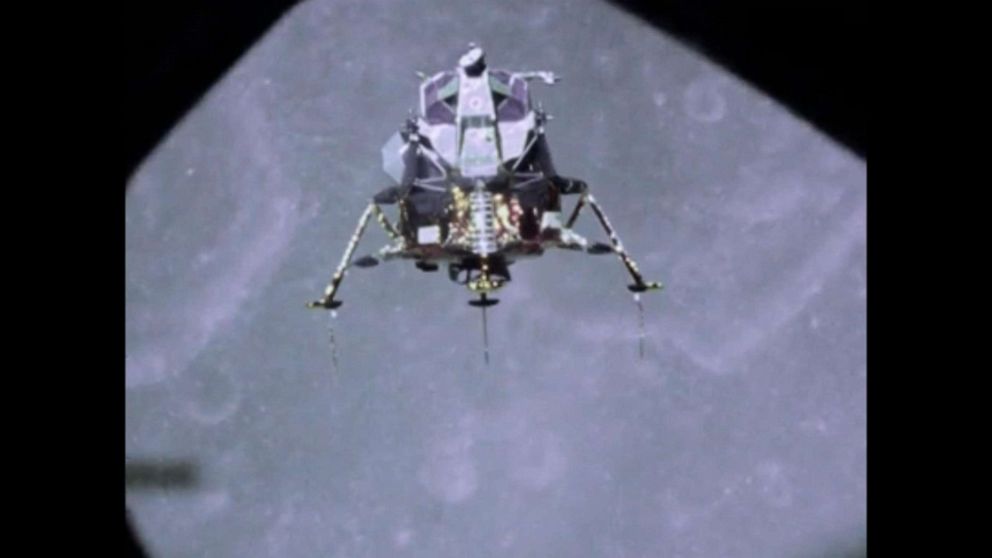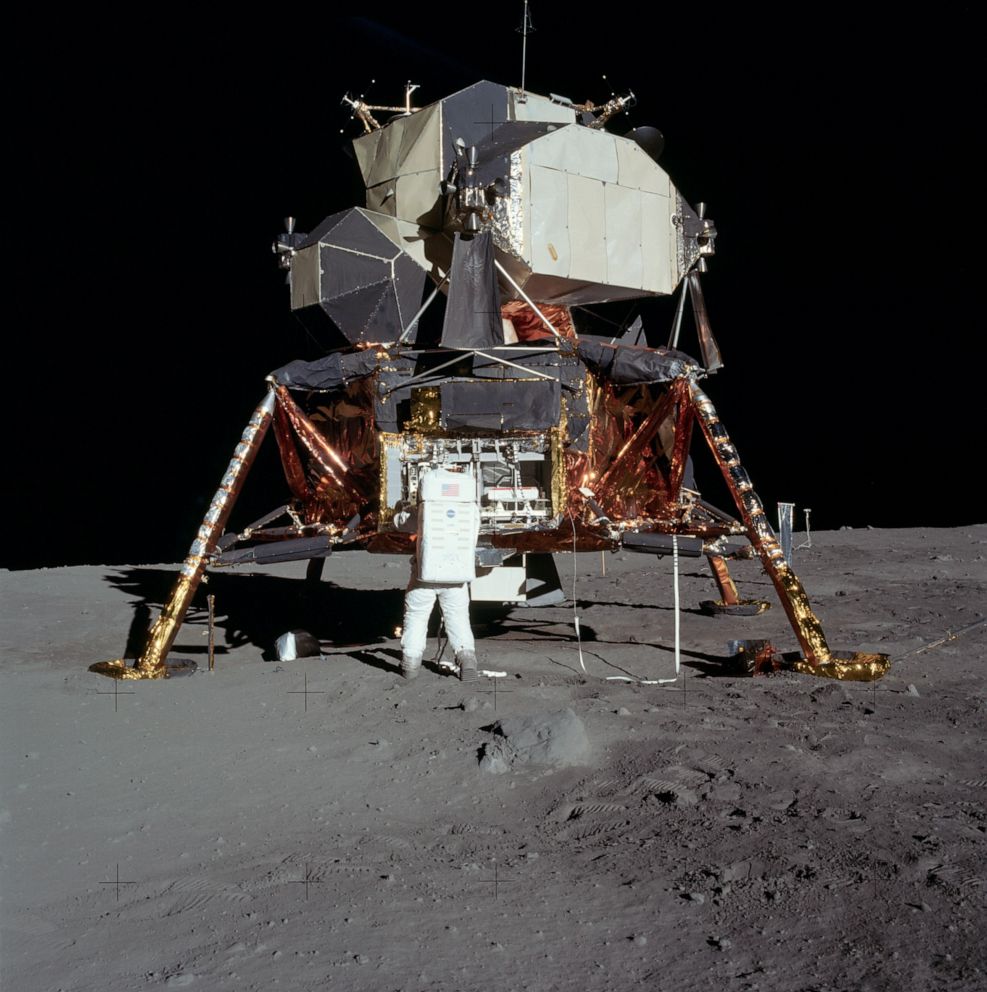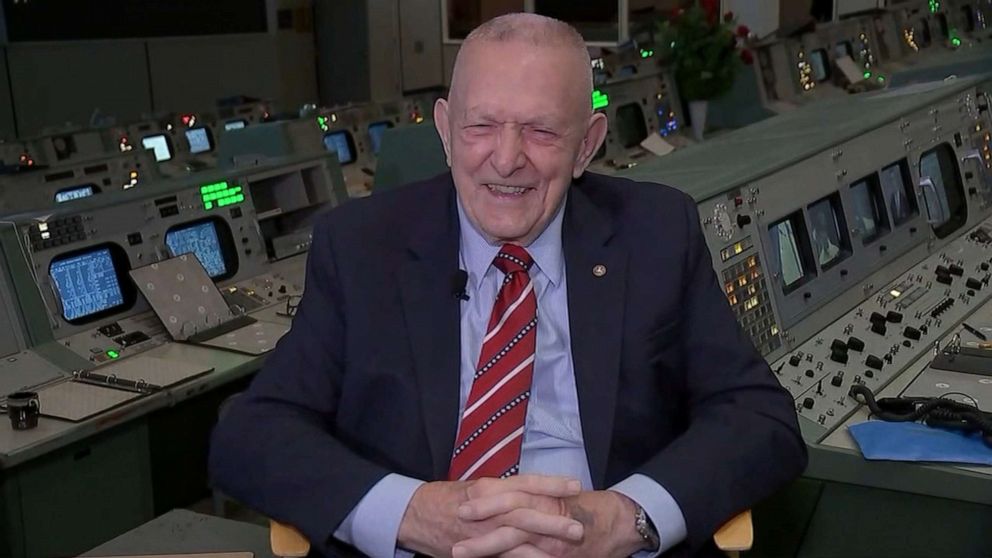50 Years Later: Apollo 11 flight director recalls final moments before moon landing
"It was the kind of thing that only happens once in your life," Kranz said.
As millions around the world watched the first lunar landing attempt, the employees at NASA's mission control center in Houston held their breaths as they closely monitored the descent of the Apollo Lunar Module.
The flight director on duty, Gene Kranz, was in charge of the landing portion of the mission. During the finalb tense moments of the landing, he had the power to make the executive go, no-go decision.
"Go for landing," Kranz radioed to Apollo 11 on July 20, 1969.

As the module began to move closer to the lunar surface, "1201" and "1202" alarms started flashing.
Kranz's decision whether or not to abort the mission was based on a simulation right before the liftoff of Apollo 11.
"Our final training run, we exercised those alarms," Kranz told ABC News Senior Transportation Correspondent David Kerley. "I always go back and I think what we would have done if we had seen those for the first time."
After mission control realized the alarms were not indications of a serious issue, NASA learned another problem threatened the module's safe contact with the moon.

The original sight where the crew had planned to land was covered in huge boulders. Apollo 11 astronaut Neil Armstrong was forced to take manual control of the module just seconds before landing or they risked running out of fuel.
"I think many Americans sometime in their life have driven when the gas gauge in the car reached empty," Kranz said. "That was the condition that we were on."
To mission control's relief, Armstrong was successful, and at approximately 3:18 p.m. Central time, they heard his call out to Houston: "Tranquility Base here. The Eagle has landed."
Kranz vividly remembers the capsule communicator's, or CAPCOM's, response to Armstrong and fellow astronaut Buzz Aldrin.

"Roger, Tranquility," CAPCOM said. "We copy you on the ground. You've got a bunch of guys about to turn blue. We're breathing again. Thanks a lot.”
After the landing, people couldn't contain their excitement, but the work of mission control was far from complete.
"At the instant of the landing, the people in the viewing room started cheering, stomping their feet, applauding," Kranz said. "And we had to go through a series of stay, no-stay decisions, and it was just a question of keeping control of the people within the room that they did not get that exuberance."
Kranz said his proudest moment isn't the landing itself, but the culture and frame of mind that was established in the four walls of mission control.

"It was the kind of thing that only happens once in your life," Kranz said. "And before we went down I had a little talk, very private talk with my controllers: 'Whatever happens here today I will stand beside every decision you make. We came into this room as a team and we will leave as a team.'"
A year after Apollo 11, Kranz used what he had learned during the Apollo 13 mission when an Oxygen tank exploded with three astronauts on board.
He told his team at the time that "Failure is not an option."
All three Apollo 13 crew members survived.
ABC News' Gina Sunseri, Nate Luna, and Christine Theodorou contributed to this report.




